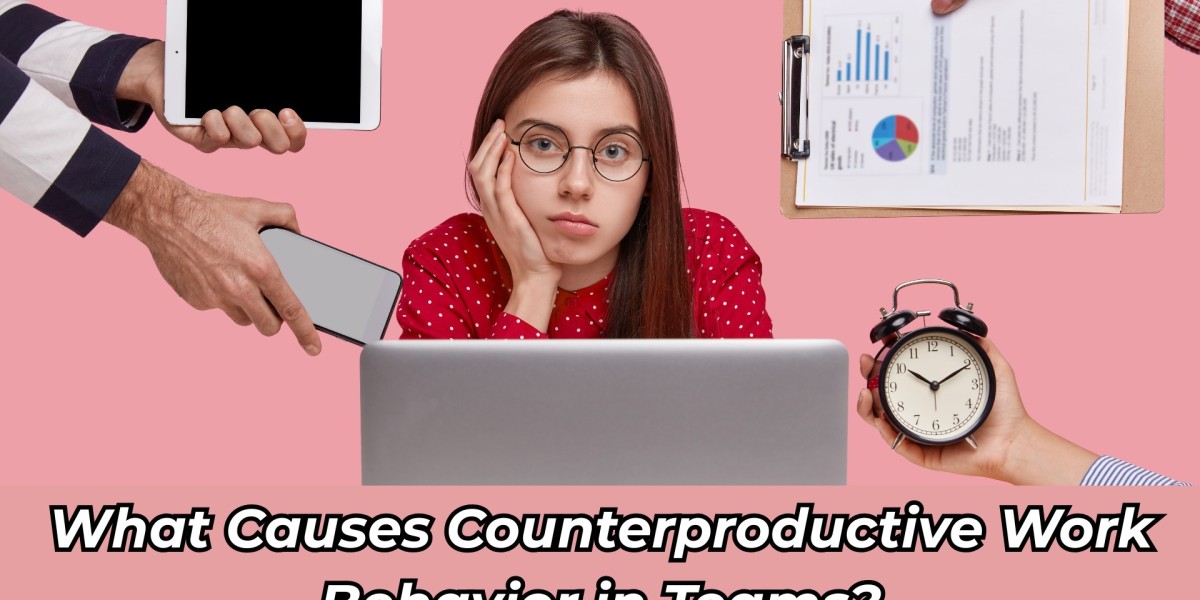What happens when one person quietly derails an entire team? It’s not always about missed deadlines or loud disagreements. Often, it’s the subtle, everyday behaviors of chronic lateness, lack of accountability, or constant negativity that silently disrupt collaboration and drain team energy. These actions may not seem severe at first, but over time, they create tension, lower morale, and hinder performance.
Even in high-functioning workplaces, internal disruptions can take root and spread if not addressed early. These issues often stem from patterns of counterproductive work behavior that quietly undermine team dynamics. To foster healthier, more productive teams, leaders must recognize the hidden causes behind these behaviors and take proactive steps to stop the damage before it escalates.
What Are Negative Behaviors in the Workplace?
Negative behaviors refer to actions that deviate from organizational goals and undermine team performance. These can include anything from passive resistance to blatant misconduct. Often, they’re not isolated incidents but part of an ongoing pattern. The damage caused may not be immediately visible, but it accumulates over time, affecting trust, motivation, and outcomes.
How Do These Behaviors Impact Teams?
A single unmotivated team member can cause a ripple effect. Colleagues may become frustrated, communication may break down, and overall productivity may drop. Eventually, toxic behaviors can lead to high turnover, damaged reputations, and poor client relationships.
Even high-performing employees can be affected if they are constantly dealing with disruptive colleagues. Over time, this can reduce their own productivity and engagement, leading to burnout or even resignation.
Common Signs of Disruptive Behavior at Work
Recognizing the early signs of harmful workplace behavior is key to addressing it. Some common indicators include:
Chronic tardiness or absenteeism
Blame-shifting or refusal to accept responsibility
Withholding important information from teammates
Gossiping or creating interpersonal conflicts
Refusal to collaborate or help others
Deliberate underperformance
When these actions are repeated, they can be classified under a broader pattern often referred to as counterproductive work behavior.
What Triggers Unproductive Conduct in Teams?
There are several factors both personal and organizational that can contribute to unhealthy patterns in team dynamics:
1. Poor Leadership and Management Style
Team leaders set the tone for group behavior. If management is inconsistent, overly authoritarian, or indifferent, team members may respond by disengaging. Lack of clear communication, feedback, or direction can make employees feel undervalued or confused, which often leads to destructive actions.
2. Lack of Recognition and Feedback
When employees feel that their efforts go unnoticed, motivation naturally decreases. A culture lacking appreciation or constructive feedback can push employees toward disinterest or even passive-aggressive behavior.
3. High-Stress Environments
Workplaces that are chronically stressful with unrealistic deadlines, unclear expectations, or insufficient support can trigger emotional exhaustion. Under pressure, even typically well-behaved employees may begin acting out in uncharacteristic ways.
4. Toxic Team Culture
If gossip, favoritism, or backstabbing are tolerated, those behaviors will spread. Toxic environments breed resentment, hostility, and mistrust among team members, leading to interpersonal disputes and reduced cooperation. Tools like an hour calculator work best in such settings to ensure transparency in workloads and schedules, helping teams maintain fairness and accountability.
5. Misalignment Between Role and Skill Set
When employees are placed in roles that don’t match their skills or interests, frustration builds. They may feel out of place, underqualified, or even bored all of which can contribute to a lack of engagement and harmful behavior.
6. Job Insecurity and Lack of Growth Opportunities
Fear of layoffs or a stagnant career path can lead to anxiety, which manifests as resistance, blame, or sabotage. People who see no future in their roles are unlikely to invest their full effort.
7. Unfair Policies and Practices
Perceived inequality such as biased promotions, inconsistent rules, or favoritism can destroy morale. When employees feel mistreated, their loyalty fades, making them more likely to push back subtly or openly.
Can Monitoring Tools Help?
Absolutely. Advanced employee monitoring tools like EmpMonitor, Activtrak can play a vital role in identifying early signs of disengagement or behavioral issues. With features like real-time activity tracking, productivity analysis, and attendance monitoring, managers can detect behavioral changes before they escalate. These tools offer data-driven insights without intruding on employee privacy, fostering both accountability and fairness.
How Can Managers Address the Root Causes?
Addressing negative team behavior isn’t about punishment, it’s about understanding and correcting the causes behind it. Here’s what can help:
Encourage open communication: Make it safe for team members to express concerns.
Set clear expectations: Employees should always know what’s expected and how to meet those expectations.
Provide consistent feedback: Recognize both good performance and areas for improvement.
Offer development opportunities: Encourage growth with training, mentoring, and upskilling.
Model positive behavior: Leaders should lead by example and show integrity in all actions.
Promote fairness and inclusivity: Ensure every team member feels heard and treated equally.
The Role of Positive Work Behavior
While harmful behaviors get the most attention, it’s essential to nurture productive habits as well. Encouraging collaboration, celebrating small wins, and fostering trust can create a resilient team culture. Employees are more likely to stay engaged when they feel respected, empowered, and part of something meaningful.
You can also watch : Emp Monitor | Boost Workplace Productivity with Employee Monitoring Software
Conclusion
Unhealthy patterns in teams don’t appear out of nowhere; they’re often the result of complex personal and organizational factors. When left unaddressed, these patterns can develop into counterproductive work behavior that disrupts collaboration and slows progress. By recognizing early signs, understanding the underlying triggers, and fostering a culture of openness and fairness, managers can create an environment where teamwork thrives and productivity flourishes.
Combining strategic leadership with supportive tools can go a long way in building a high-performing, positive team. It’s not just about reducing bad behavior, it’s about creating space for people to do their best work.








